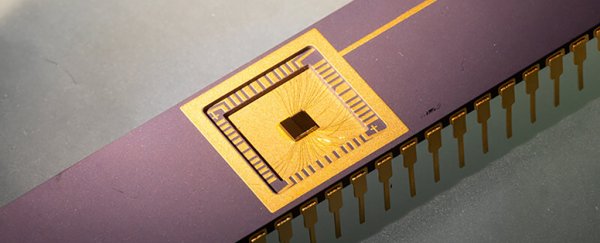Scientists have been able to draw power from the thermal motion of graphene at room temperature, potentially giving us a clean future source of limitless energy for small devices.
The approach cleverly harnesses both the nanometre-sized rippling and the Brownian motion - random movement of particles - found in graphene, producing an electric current that could be put to a variety of uses.
"An energy-harvesting circuit based on graphene could be incorporated into a chip to provide clean, limitless, low-voltage power for small devices or sensors," says physicist Paul Thibado, from the University of Arkansas.
The research draws on previous work from the same lab, in which freestanding graphene was shown to ripple and buckle in a way that could be harvested for energy.
"The origin of these nanometre-sized ripples is still an open question," the team writes in their study, noting that the graphene ripple seems to stem from subatomic particle interactions in the material.
A crucial part of the development of their system was using two diodes in the circuit to convert the original alternating current (AC) into direct current (DC). This allowed the current to flow both ways through the circuit, along separate paths.
The end resulting is a pulsing DC current that can perform work on a load resistor, and potentially power up small electronic devices. Another finding was that the two-diode design of the system helped to boost the amount of power delivered.
"We also found that the on-off, switch-like behaviour of the diodes actually amplifies the power delivered, rather than reducing it, as previously thought," says Thibado.
"The rate of change in resistance provided by the diodes adds an extra factor to the power."
What the research shows is a symbiotic setup between the graphene and the circuit, one which avoids conflicting with the second law of thermodynamics by maintaining one uniform temperature so that heat isn't transferred. The current flowing in the resistor doesn't heat it up, in other words.
This part of the research owes a lot to stochastic thermodynamics, a relatively new field of study looking at how the macro and the micro interact in systems when it comes to the interplay of energy and heat.
The slow motion of the graphene means that current is induced in the circuit at low frequencies, and that's important for efficiency.
The next challenge will be working out how the system might be deployed and used in something practical – firstly by figuring out if the energy can be stored in a capacitor for later use.
While the energy produced by freestanding graphene is likely to be quite small, it could one day be a replacement for low-power batteries – and it wouldn't need recharging or replacing. Anything that gets us towards a clean, renewable energy future is always a welcome development, no matter how small.
The research has been published in Physical Review E.
